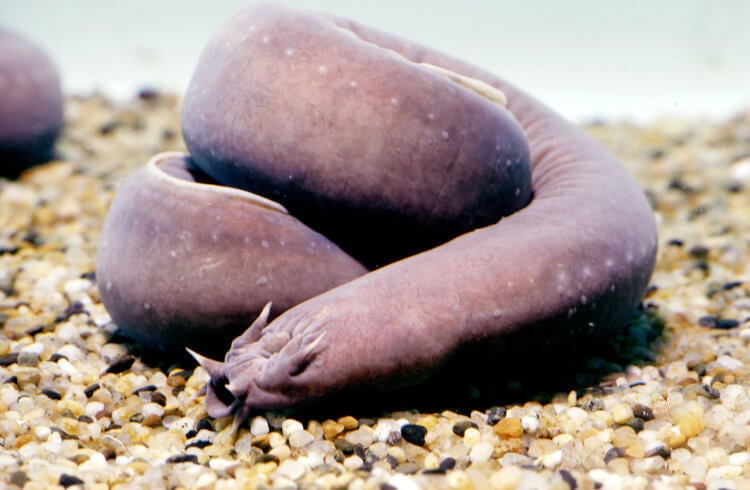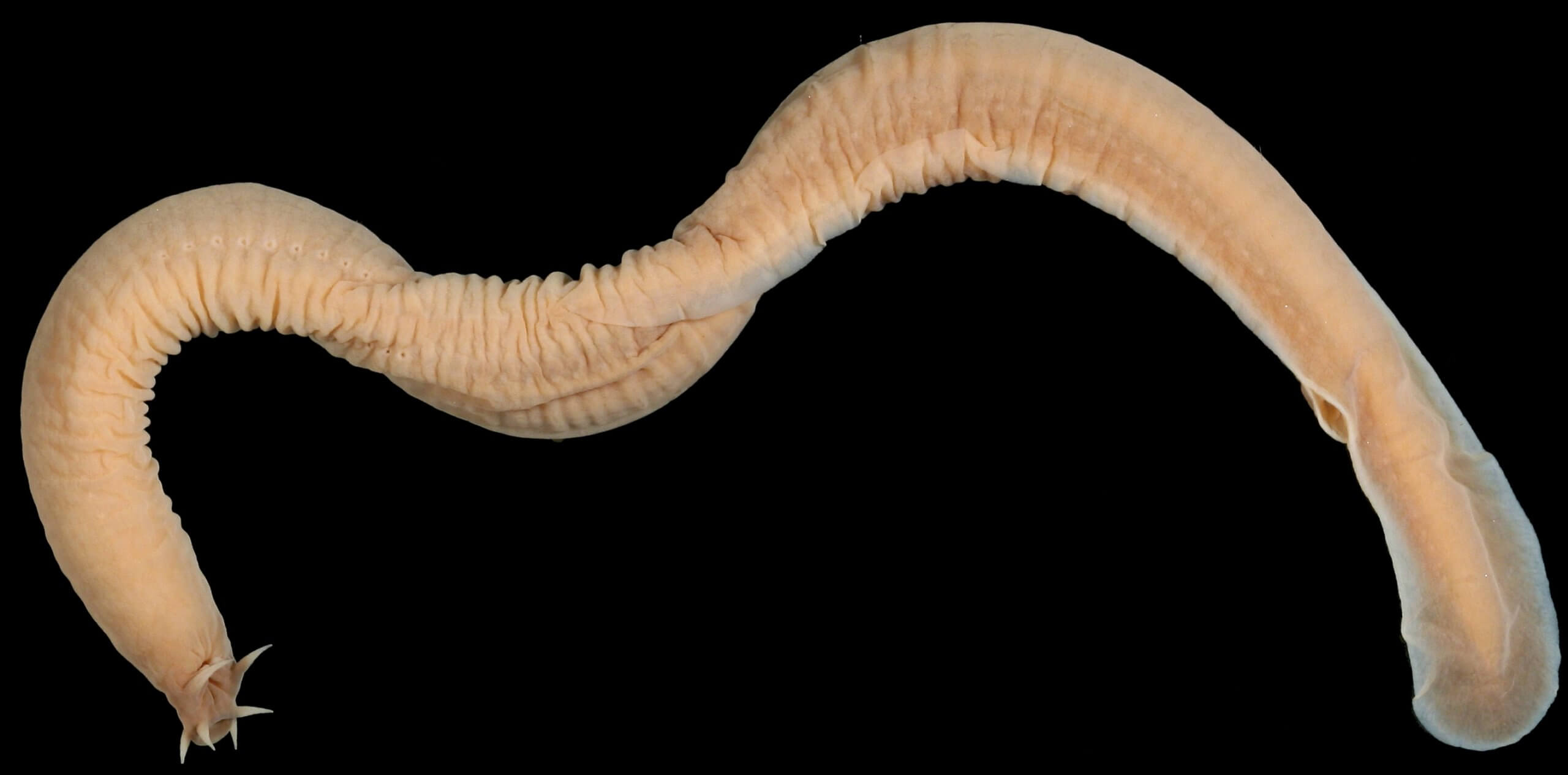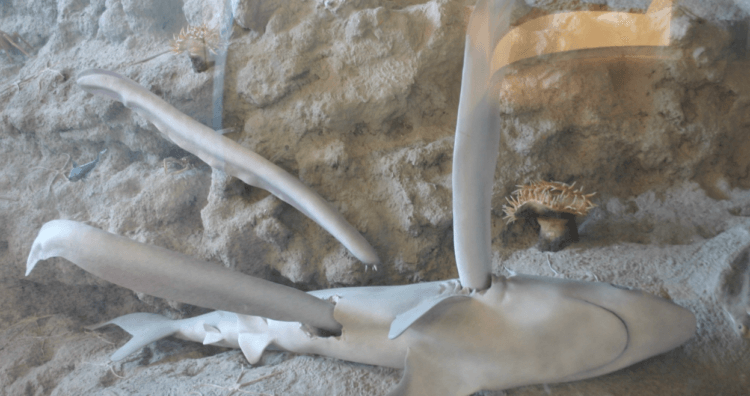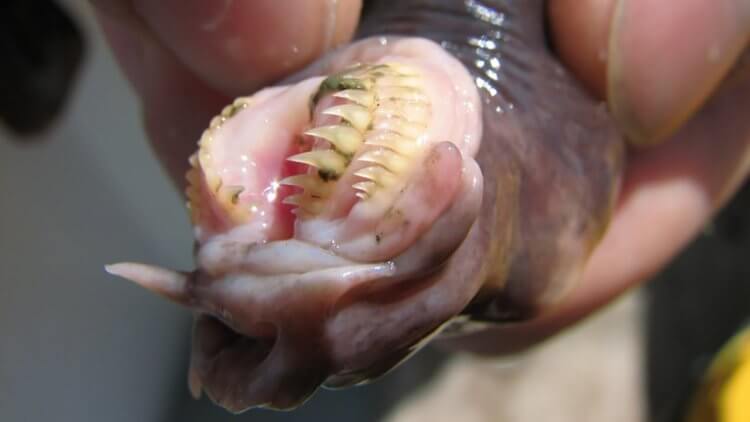In the depths of the ocean live a variety of creatures that can surprise not only with their appearance, but also with how they have adapted to the environment. One such creature is the Pacific hagfish, or leechfish (Eptatretus stoutii). It is a fish, but it does not have a vertebra at any stage of its development, and it also does not have scales or fins. Therefore, the hagfish looks more like a giant earthworm with a mouth. Even more amazing is that this ancient creature has been living on the planet for more than 500 million years. That is, it arose millions of years before fish began to emerge from the sea onto land, and even before the first trees appeared on Earth.

Pacific hagfish — a creature that can kill a shark. Photo source: fishbiosystem.ru
Pacific hagfish — unusual sea creature
The unusual creature Eptatretus stoutii grows up to 64 centimeters in length, but in most cases just over 40 centimeters. Outwardly, these fish are most similar to eels, but have nothing to do with them. In fact, they are a type of cyclostome fish. The closest relative of the Pacific hagfish is the lamprey. Despite the fact that the leechmouth does not have a backbone, it still has a skull, albeit a primitive and cartilaginous one. This fish also has eyes, but they are covered with skin and see practically nothing. But hagfish have light-sensitive cells on the surface of their skin. True, they are not located on the skull, but near the cloaca. Another feature is the presence of only one nostril.

Surely you have a question – why does the hagfish belong to the vertebrates if it does not have a vertebra? This creature is indeed a primitive vertebrate, and there is genetic confirmation of this. Presumably, their ancestors had a backbone, or at least some cartilaginous approximation of a backbone, like lampreys. At some point, the hagfish lost a vertebra because it was not needed. Obviously, this happened a very long time ago.
Where does the Pacific leech live and what does it eat
The Pacific hagfish is found in the northeastern Pacific Ocean. Its habitat covers the area from southeast Alaska to Baja California in Mexico. The fish prefers silty and clayey bottoms at depths of 50 to 1000 meters. But most often, Pacific hagfish are found at depths of less than 90 meters. At the bottom, the fish feeds on small invertebrates. But it is also known to be a scavenger – they penetrate dead fish through the mouth or anus, and feed on its entrails.
Perhaps the diet of the Pacific hagfish is more varied. For example, other species of hagfish are also known to feed on shrimp, hermit crabs, cephalopods, whale meat, etc. Unfortunately, information regarding the Pacific hagfish is very limited.

Hagfish feed on carrion. Photo source: elementy.ru
But, in any case, these creepy creatures help maintain the purity of the ecosystem and ensure the circulation of nutrients at great depths. It must be said that hagfish are not eaten often. Even in captivity, they are fed only once every 3-6 months. But when they eat, they eat “with plenty.”
As mentioned above, hagfish see practically nothing, so they rely on their sense of smell, which is well developed. They also have four tentacles around their mouth to help them find food. And to tear and consume fish meat, they use two pairs of tooth-like projections on their tongue.

The Pacific hagfish has two rows of tooth-like projections. Photo source: fishbiosystem.ru
How a hagfish can kill a shark
Despite the fact that the leechworm does not hunt sharks and is small in size, it can easily kill this ferocious predator if it senses danger from it. When a shark or other large fish approaches, the hagfish releases a sticky mucus that clogs the attacker's gills, causing the predator to suffocate. Therefore, as LiveScince reports, attacks by gill predators always end in failure for the latter.

In just a couple of seconds, a hagfish can produce several liters of viscous mucus, which consists of hundreds of thousands of strong protein threads. The mucus is so strong that scientists have even created a synthetic fabric based on it, from which you can make clothes.
Be sure to visit our Zen and Telegram channels, here you will find the most interesting news from the world of science and the latest discoveries!
Employees at the Naval Surface Warfare research center were able to synthesize the protein with which these creatures make mucus from water. The resulting material turned out to be not only very elastic, but also ten times stronger than steel. This allows you to make armor literally out of water.